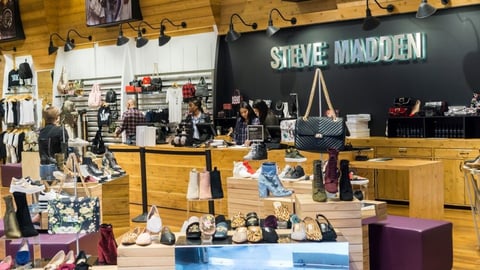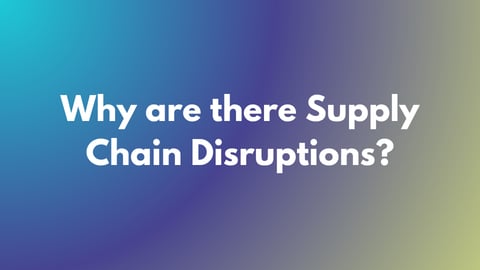Navigating the Just-in-Case vs. Just-in-Time Inventory Rollercoaster
“Inventory management” has become one of the most common phrases in CPG and retail circles and discussions over the last several years — and for good reason.
Thanks to the COVID-19 pandemic, the Russia-Ukraine crisis, the outbreak of monkeypox, and a slew of other disruptive forces, retailers and CPG brands have been trying to navigate the inventory management landscape in any way possible. While almost every aspect of inventory management has been impacted by the last three years, one area in particular is creating significant headaches for retailers and CPG brands: managing just-in-case vs. just-in-time inventory.
Since the 1980s, when overarching business thinking began pushing for optimization versus insurance, inventory management has been guided by just-in-time principles that aim to have as close to the needed amount of stock to meet demand — and no more. However, as the last three years have shown, operating without adequate reserves of stock can have a massive impact on business performance and reputation management — see the price gouging that occurred during the early days of the pandemic.
[Read more: Clorox Leans Into Scenario Planning for Never-Normal Supply Chain Future]
This realization has caused retailers and CPG companies to revert back to a pre-1980’s mindset of inventory hoarding “just-in-case.” However, this approach also comes with significant downsides as the additional security that surplus inventory comes with also entails formidable carrying costs and potential financial waste when reserves cannot be liquidated.
The result? Brands find themselves in a catch-22: run the risk of not having the stock to meet demand and upsetting customers, or overstock their shelves, but irk financial stakeholders with smaller — or negative — profits across several SKUs.
This is obviously an undesirable position to be in. However, it isn’t completely unmanageable. Inventory management strategy does not need to be a rigid process. It is possible to strike a balance between just-in-case and just-in-time inventory management. It just requires the insights and toolsets necessary to make dynamic, real-time decisions; which is why retailers and CPG brands continue to experiment with AI and machine learning.
Here are several ways in which AI can be used to navigate the just-in-time vs. just-in-case inventory management dilemma.
Staying Ahead of Disruption
Scooping up significant surpluses of inventory as a hedge against market volatility has been a staple of the retail industry for decades — even as more data-driven decision making has seeped into retail and CPG. However, blindly hoarding stock at random simply isn’t necessary anymore as real-time analytics and advanced data science tools like AI have become more reliable.
Variability in demand is simply a fact of life. However, with modern solutions available, retailers and CPG brands have much greater visibility and predictive capacity than they ever have before. For example, through next-gen technology, companies can monitor evolving supply chain disruptions and other emerging risks — like labor strikes or weather-related disasters — to both react more quickly and even anticipate when certain inventory access problems may occur.
This allows companies to reassess their just-in-case vs. just-in-time position before the worst happens, allowing for more thoughtful decision-making to take over.
Maximize Value
Managing inventory demand isn’t only a pain when a major disruption strikes; it can happen on micro-levels as well. Demand varies greatly from region-to-region and even store-to-store. Meaning, some stores may need just-in-case inventory while others do not need any.
This creates opportunities for retailers and CPG brands to both maximize their inventory levels and liquidate excess stock — but only if they can allocate this stock effectively. In previous years, just-in-case thinking called for retailers to just pick-up massive chunks of stock and then let it sit at hubs in hopes that it would eventually be used up.
With AI for example, retailers and CPG brands can quickly meld real-time and historical data to disperse stock in a way that is truly optimized, allowing for businesses to strike a balance between security and sunk costs.
Moreover, it also allows retailers and CPG brands to dynamically manage prices and coordinate markdowns in a scientific, location-based way.
Driving Better Decisions
Having a more complete view of the inventory market also allows retail and CPG businesses to make decisions that drive better business performance. For example, through the increased agility brought on advanced technology adoption, businesses can identify potential inventory issues earlier allowing them to buy additional stock before crunches set in and prices skyrocket. In turn, this type of foresight can allow businesses to avoid making knee-jerk decisions based on outside influences — for example, running to buy excess stock just because everyone else is.
In addition, these predictive capabilities also have knock-on effects on a budget as well in terms of maximizing spends on logistics, warehousing, and other ancillary overhead costs that are tied to inventory.
Hitting the right balance between “just-in-case” and “just-in-time” is one of the biggest headaches that retailers and CPG brands have to cope with. However, through AI and other data science tools, brands in these categories can equip themselves with knowledge, agility, and adaptability they need to make better inventory decisions and quickly course correct when necessary.
—Sandeep Bhogaraju and Sharada Karmakar, Fractal Analytics





